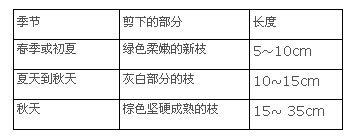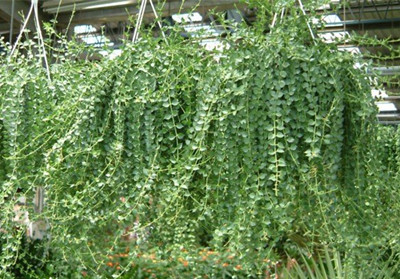How to apply fertilizer to lipstick orchid
□ Red Cymbidium, Cymbidium mandshurica, dew grass, dew flower, heart leaf ice flower, sun rose, sheep horn hanging orchid, cherry blossom, peony hanging orchid, heart leaf sunflower and many other aliases, lovely and strange shape, grow well in a warm and semi-overcast environment, very suitable for office or home display.
□ red hanging orchid needs a large amount of fertilizer, and the ratio of cultivation and distribution in different growth periods has its own emphasis. The amount and interval of fertilizer application should comprehensively consider the growth of flowers, temperature, humidity and other environmental factors. □ red hanging orchid growth period, about 10 to 15 days to apply a secondary fertilizer solution, the basin soil to maintain a moist condition, do not accumulate water in the basin, to prevent root rot.
With the gradual decrease of temperature in autumn, the amount of water and fertilizer also decreased. In winter, the fertilizer requirement of □ red orchid is reduced, and the basin soil should be slightly dry. The florescence of □ is mainly from December to February of the following year, during this period, special attention should be paid to the duration of light and the application of phosphate fertilizer.
After mastering the law of fertilizer requirement of □ red orchid, it is necessary to improve its utilization rate of applied nutrients. In the process of plant production, there is often a problem that the amount of fertilizer applied can meet the requirements of plant growth, but the nutrient utilization efficiency of plants is low, and some of the fertilizers have been lost with water before they have been used by plants. therefore, improving the absorption and utilization efficiency of nutrients by plants is the key to save production costs and improve the quality of flowers.
In addition, the effects of some medium and trace elements on the quality of flowers are also very important, such as calcium, iron, zinc, manganese and so on. The application time, nutrient form and plant root zone microenvironment are important factors affecting nutrient absorption and utilization.
The deficiency of specific nutrient elements will show different symptoms on the plant, so the following points should be paid attention to in the diagnosis of nutrient deficiency. -is to determine the symptoms of element deficiency. In the actual production process, the phenomena of curling leaves and yellow edges caused by diseases and insect pests of flowers and other environmental conditions are very similar to the symptoms of element deficiency, so we should pay attention to the distinction with other diseases in order to prescribe the right medicine. The reason is to look at the location of element deficiency.

Under the same circumstances, if the disease occurs in the old leaves or mature parts, it may be caused by the loss of mobile elements such as nitrogen, potassium and magnesium; if the disease occurs in young leaves or stem tips, it may be caused by poor mobility elements such as iron, calcium and zinc. Third, combined with reality, comprehensive replenishment. In the actual production process, the symptoms of element deficiency are usually complex, the characteristics are not very obvious, and it is difficult to judge, such as the chlorosis of veins and edges of old leaves occur at the same time, and these two symptoms are typical phenomena of magnesium deficiency and potassium deficiency respectively.
Therefore, in the supplementary application of nutrient elements, it is best not only to apply single-element, but also to consider comprehensively the fertilizer demand characteristics and planting experience of the production varieties, and finally give a more comprehensive diagnosis, and then supplement.
Lipstick hanging orchid how to fertilize lipstick hanging orchid, also known as flower vine grass, dew grass, dew flower, heart leaf ice flower, sun rose, sheep horn hanging orchid, cherry blossom, peony hanging orchid, heart leaf day flower and many other aliases, the shape is lovely, strange, grow well in a warm and semi-overcast environment, very suitable for office or home display. Lipstick orchid needs a large amount of fertilizer, and the ratio of maintenance and distribution in different growth periods has its own emphasis. The amount and interval of fertilizer application should comprehensively consider the growth of flowers, temperature, humidity and other environmental factors. Lipstick hanging orchid growth period, about 10 to 15 days to apply fertilizer once, the basin soil to maintain a moist condition, do not accumulate water in the basin, to prevent root rot. With the gradual decrease of temperature in autumn, the amount of water and fertilizer also decreased. In winter, lipstick orchid needs less fertilizer, and the basin soil should be slightly dry. The flowering period of lipstick is concentrated from December to February of the following year, during which special attention should be paid to the duration of light and the application of phosphate fertilizer. After mastering the law of fertilizer requirement of lipstick orchid, it is necessary to improve the utilization rate of nutrients. In the process of plant production, there is often a problem that the amount of fertilizer applied can meet the requirements of plant growth, but the nutrient utilization efficiency of plants is low. A considerable part of the fertilizers applied have been lost with water before they have been used by plants. Therefore, improving the absorption and utilization efficiency of nutrients by plants is the key to save production costs and improve the quality of flowers. In addition, the effects of some trace elements on the quality of flowers are also very important, such as calcium, iron, zinc, manganese and so on. The application time, nutrient form and plant root zone microenvironment are important factors affecting nutrient absorption and utilization. The deficiency of specific nutrient elements will show different symptoms on the plant, so the following points should be paid attention to in the diagnosis of nutrient deficiency. One is to determine the symptoms of element deficiency. In the actual production process, the phenomena of curling leaves and yellow edges caused by diseases and insect pests of flowers and other environmental conditions are very similar to the symptoms of element deficiency, so we should pay attention to the distinction with other diseases in order to prescribe the right medicine. The second is to look at the location of element deficiency. In general, if the disease occurs in the old leaves or mature parts, it may be caused by the loss of mobile elements such as nitrogen, potassium, magnesium and so on; if the disease occurs in young leaves or stem tips, it may be caused by poor mobility elements such as iron, calcium and zinc. Third, combined with reality, comprehensive replenishment. In the actual production process, the symptoms of element deficiency are usually complex, the characteristics are not very obvious, and it is difficult to judge, such as the chlorosis of veins and edges of old leaves occur at the same time, and these two symptoms are typical phenomena of magnesium deficiency and potassium deficiency respectively. Therefore, in the supplementary application of nutrient elements, it is best not to apply only a single element, but to consider comprehensively the fertilizer demand characteristics and planting experience of the production varieties, and finally give a more comprehensive diagnosis, and then supplementary application. What kind of fertilizer is applied to lipstick orchid? What are the notes on the fertilization of lipstick orchid?
Lipstick orchid, also known as lipstick, belongs to evergreen trailing herbaceous flowers, named because of its shape similar to lipstick, its thick green leaves coupled with bright red, strange Corolla, quite popular with people, is a good product in the family room hanging flowers. Today, the editor of China Agricultural Chemical Merchants Network will share with you what kind of fertilizer lipstick hanging orchid applies? What are the precautions?
What kind of fertilizer is applied to lipstick hanging orchids:
When applying fertilizer to lipstick orchid, we should pay attention to the combined use of nitrogen, phosphorus and potassium, and pay attention to the application of less nitrogen fertilizer during flowering period. today, with years of flower cultivation experience, the editor recommends a relatively easy-to-use lipstick orchid fertilizer-Huinong flower special fertilizer. Fertilizer is a kind of flower foliar fertilizer is a kind of high-efficient compound microecological preparation which integrates nutrition and health care. The fertilizer is rich in active glucose, enzymes, nucleic acids, higher alcohols, unknown growth promoting factors and active beneficial microorganisms, and can directly enter the deep cells through the surface cells of lipstick orchid to participate in crop metabolic activities. it can effectively improve the ornamental effect of lipstick orchid, such as bright green leaves, bright color of flowers, long flowering period and not easy to wither.
Matters needing attention in applying fertilizer to lipstick orchids:
1. During the vigorous growth period of lipstick orchid, mature organic fertilizer can be applied once every 15 to 20 days. The basin soil should always be kept moist, and the stagnant water in the basin should be avoided so as not to cause root rot. The weather is getting colder and colder in autumn, so the amount of water and fertilizer should be reduced gradually.
2. The basin soil should be slightly dry in winter. In general, there should be less fertilization or no fertilization, except that some fertilizer with a little more phosphorus should be applied before the bud blossoms.
Lipstick hanging orchid fertilizer method to share with you here, there are friends who know more about this knowledge are welcome to come to supplement.
- Prev

How to cut Rosemary
Rosemary cuttings can be cut in soil or in water, and then planted in soil after rooting. Flower friends can choose their own cutting methods. Rosemary water rooting method: 1. Cut new twigs from healthy and luxuriant rosemary with clean scissors, and pay attention to avoid twigs with flowers.
- Next

The culture method of million hearts (string of money rattan, button jade)
Wanxin, which originated in Australia, is a new variety of Guanye introduced in recent years. Sex like moist, like semi-shade environment, more drought-resistant, the suitable temperature for growth is 20 degrees Celsius ~ 30 degrees Celsius. The material with good aeration is selected as the cultivation medium, and the nutritive soil can be prepared by mixing serpentine chips with an appropriate amount of perlite. Million hearts have strong tolerance to drought.
Related
- Fuxing push coffee new agricultural production and marketing class: lack of small-scale processing plants
- Jujube rice field leisure farm deep ploughing Yilan for five years to create a space for organic food and play
- Nongyu Farm-A trial of organic papaya for brave women with advanced technology
- Four points for attention in the prevention and control of diseases and insect pests of edible fungi
- How to add nutrient solution to Edible Fungi
- Is there any good way to control edible fungus mites?
- Open Inoculation Technology of Edible Fungi
- Is there any clever way to use fertilizer for edible fungus in winter?
- What agents are used to kill the pathogens of edible fungi in the mushroom shed?
- Rapid drying of Edible Fungi

